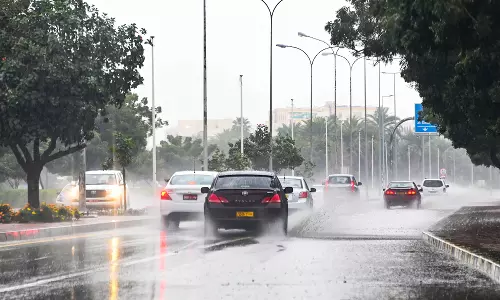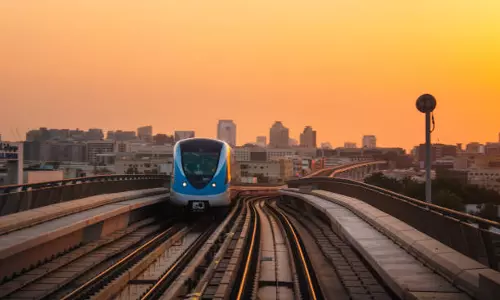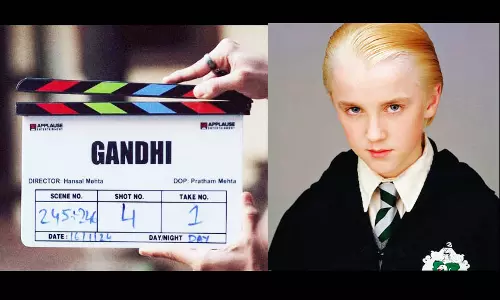
Handling Insurgency: Tripura Marxists' model
text_fieldsNew Delhi: Three northeastern states Manipur, Meghalaya and Tripura observed statehood day on Jan 21. It was on this day in 1972 that statehood was granted to these three northeastern states.
Insurgency, as one sees from outside in rest of India is a common issue in all the three states. But insurgency or anti-India militancy started in each state for their own separate reasons.
They have been handled separately too. This is the catch, and a very crucial message for ivory tower experts among bureaucrats, politicians and even intellectuals who often run the risk of encompassing the entire region as one unit.
The issues were different. But having made a strong pitch for handling things 'separately', one needs to admit that in terms of governance or misgovernance - all these three states including the likes of Nagaland and Mizoram too have had some common problems.
The principal grievance of native tribes and especially the younger generation is that there is a lack of job avenues. Then again certain legislation and central government's modus operandi remain issues to be debated.
The Armed Forces Special Power Act (AFSPA) remains a bitter pill. It is also a double-edged sword, more often a necessary evil.
Lt Gen P C Nair, DG, Assam Rifles recently said that in states such as Manipur and Nagaland - wherever the AFSPA was withdrawn there was a rise in extortion. In fact, no individual worth his salt can deny the presence of extortion racket in the region. It is almost like a cottage industry.
In Tripura, the erstwhile Marxists regime under Manik Sarkar deserves praise for fighting insurgency, The CPI-M led Left Front had come to power in 1993 and ruled the state till March 2018, when the BJP could oust the communists.
On-ground assessment from Tripura says several factors actually had contributed to the success of counter-insurgency strategies of the 'Manik Sarkar model'.
An old- timer in Agartala among retired police personnel says as Chief Minister 'Manik da' used to personally supervise some of the operations. One such step that fetched dividends included induction of tribal force officials in the operations.
Other factors included panchayat-level electoral success of the CPI-M and of course the media management and successful propaganda mechanism. Anyone with little knowledge of communist culture either in Kerala or West Bengal would easily appreciate these factors.
The Tripura model of counter-insurgency operations included involvement of local police officials, giving a key role to the specialised Tripura Rifles and good coordination with Assam Rifles paramilitary forces.
The anti-insurgency- specialised Assam Rifles run by the Central government dwelt on the strategy for swift area domination and also psychological operations and welfare works in tribal hubs. Thus, slowly the forces such as NLFT and ATTF were weakened. Nevertheless, some of the inherent challenges still remain.
The tribal-non tribal (Bengali domination) relationship is very sensitive and issues of joblessness etc keep visiting people's mind. Now, of course the onus is on the BJP leadership both in the state and in the Centre.
Some security officials still say the insurgency has not been uprooted in Tripura completely and even in 2021 security forces were attacked.
On the other hand, insurgency in two other states Manipur and Meghalaya have thrived or continued to persist with their own peculiarities.
Part of the genesis of the problems lies with in the manner New Delhi had handled these states. Originally a princely state, Manipur was ruled by a succession of kings. Manipur was 'merged' with the Indian union on Oct 15, 1949; but statehood had come only as late as 1972. This delay in ensuring statehood only fueled the discontent among the native Meiteis - most of them being Hindus even up to this day.
There are sizable Meitei Muslims too but the issues like 'Manipur unity and geographical boundaries' unite all Meiteis into one.The delay in granting statehood was felt more on ground by Meities as neighbouring Nagas got a statehood for them way back in 1963. Moreover, there is a substantial Naga population in Manipur and the 'fear' of possible disintegration of Manipur state is like a double-edged sword and a major political issue even up to this day. One Meitei group was floated by the name United National Liberation Front in 1964. Till around 1968 for four years, the UNLF had maintained non-violent status. Now, it is an insurgent group.
On the other hand, New Delhi did not bother much. It was only in 1972, Jan 21, as per the North-East Reorganisation Act, Manipur along with Meghalaya and Tripura were granted statehood.
In Manipur even up to this day, a large number of militant groups function mostly on ethnic lines. In 2000, one senior Assam Rifles officer (Maj Gen rank) had told a group of visiting journalists from Delhi - "Whatever you do ethnicity transcends everything in Manipur".
This element is still prevalent. But political circumstances and New Delhi's influence too has been so strong that Nagas in Manipur had a veteran Rishang Keishing as the chief minister more than once. In Meghalaya, the advent of insurgency is baffling. 'The abode of clouds' essentially walked into the 'trap' of insurgency movements largely riding the menace of parochialism.
There were three rounds of anti-outsiders (anti-Dhwakhar) movements punctuated by mob attacks. First round did not continue for long in 1980. In 1987 while the rest of India was lost in cricket fever of the Reliance Cup, Shillong burnt for weeks. The parochial violence again returned in 1992 and around the same time the Hynniewtrep Achik Liberation Council (HALC) was born.
This writer is a student of Shillong's famous St Anthony's High School. But Shillong to some of us is no longer what it used to be during student days. About Meghalaya's insurgency, many years later I discovered something in Gujarat. When anti-Muslim carnage broke out in the western state in 2002, I realised how lack of adequate policing could leave immense harmful impact.
The Late KPS Gill later said about Gujarat that it has been India's most under-policed state. In Meghalaya, in the late 1990s and in the new century, one knew about the stories of helpless cops lacking manpower and arms, often giving a virtual free run to the rebels.
(Born and brought up in northeast India, Nirendra Dev is a New Delhi-based journalist. He is author of books, 'The Talking Guns: North East India', 'Godhra - Journey of a Prime Minister' and 'Modi to Moditva: An Uncensored Truth')























